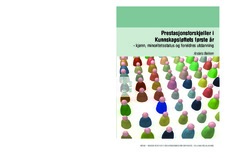| dc.description.abstract | This is the second report from NOVAs project – Does the Knowledge Promotion reform also promote equality in achievement ? The project is part of a large and ongoing evaluation of the Knowledge Promotion reform, initiated by the Ministry of Education and Research and organized and financed by the The Norwegian Directorate for Education and Training. The project aims at investigation whether the reform that was implemented in Norwegian primary and secondary education and training in 2006 reduces inequalities in school achievement based on parental education, gender and minority status in lower secondary school. The project is concerned with how the reform influences learning outcomes of different groups of students throughout the lower secondary school. In this report, the main question is to examine whether the first cohorts attending the Knowledge Promotion reform differ from the cohorts attending secondary school before the new reform was introduced, when it comes to how parental education, gender and minority status influence learning outcomes in school. The analyses reported suggest few tendencies towards a closing of these achievement gaps. On the contrary, the gap (when measured by marks at year 10) between students with different level of parental education has been widened. The increase in achievement gap started one year before the Knowledge Promotion reform was introduced, and has continued into the first two cohorts. The gender gap in marks seems to be quite stable in the period from 2002 to 2009, suggesting no particular reform effect. The achievement gap in marks at year 10 between ethnic majority and minority students (adjusted for differences in parental educational) has been very low since the year before the new reform was introduced, and has been stable for the first cohorts attending the Knowledge Promotion reform. Still, the achievement gap in national tests in reading in year 8 is still quite substantial. Even though it is too early to make claims about the how the reform affects social inequality in school achievement, the research reported here reveal that changes in achievement gaps started before the new reform was introduced. The second aim of the report is to study the role of the school in contributing to the differential progress of different groups of students through the lower secondary school. The research reported here tracks the progress of nearly 60.000 students from around 1.000 lower secondary schools from the end of year 7 to end of year 10. When these students ended their year 10, they had been exposed to the new curriculum and framework for education for two years. Achievement gain are measured through the years of lower secondary school by comparing results from national tests in reading, mathematics, and English at the end of year 7 and examination and teacher assessed marks in all subjects taught in compulsory school given at the end of year 10. The results show that students with highly educated parents and girls progress at a higher rate during these three years than students with lower educated parents and boys. Ethnic majority and minority students progress at approximately the same level, when students with equal parental education are compared. There is a substantial variation between schools, when it comes to the differential progress of different groups of students. At some schools the progress are more or less the same for different groups of students, at other school, certain groups progress at a much higher level. In the report, these variations are utilized to examine what are the characteristics of these schools, by using multilevel techniques. The analyses reveal that “effective schools” are equally effective for different groups of students. School resources and the school size are only related to inequality in achievement gain based on parental education, gender, and minority status to a small degree. The research reported here suggests that the learning environment of the school have a more important role to play in reducing the general influence from parental education, gender and minority status on learning outcomes. The analyses reveal less inequality in achievement gain in schools where the students have an inner motivation, where the teaching is adapting to their own level of learning and where the teachers are motivating and having good academic relations to their students. | en |
